Calling All Creators and Innovators to the BETA Center Makerspace
IF YOU CAN DREAM IT...
BY THE NIH CATALYST STAFF
Looking to build a camera mount, a mouse maze, or a custom polymerase chain reaction rack—or just want an excuse to use a laser cutter? The NIH has you covered.
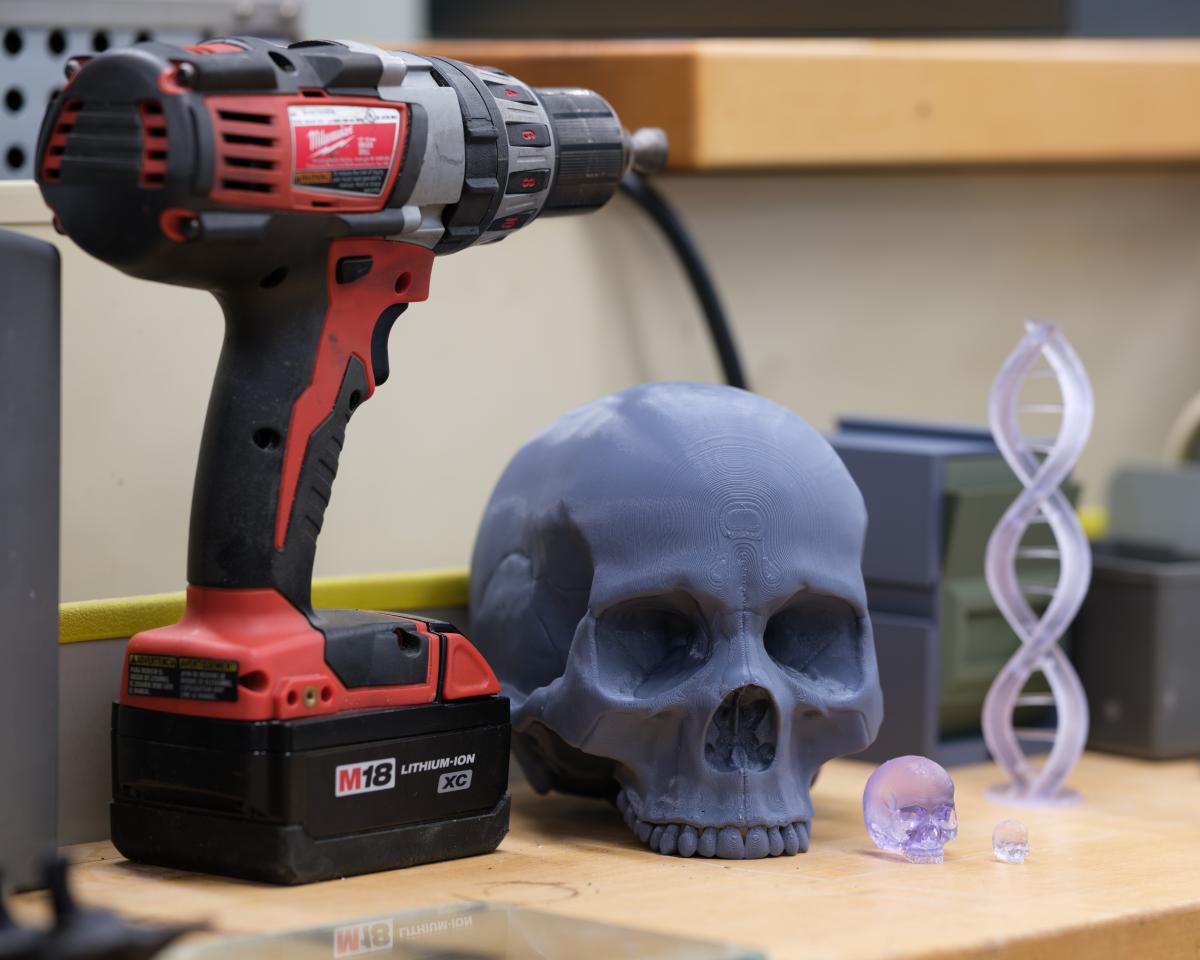
CREDIT: JASPER SHIDE, NINDS
Let us drill this into your head: the BETA Center’s Makerspace is now open for business in Building 13. These 3D-printed skulls demonstrate the scaling capability at the Makerspace. The life-size skull is used as an example of encephalocele, a defect where the skull does not fully close during development. The Makerspace team additionally printed a life-size infant skull model with a defect from a medical scan to illustrate how it can support the workflow of solving a surgical problem.
NIBIB opened a new fabrication facility on the Bethesda campus housed in Building 13 and part of its Biomedical Engineering and Technology Acceleration (BETA) Center. The facility is called, simply enough, the BETA Center Makerspace, and it is NIH’s very own innovation garage—a high-tech playground where NIH staff can prototype tools, gadgets, and experimental devices faster than you can say “fused deposition modeling.”
Officially launched in May, the Makerspace has welcomed NIH scientists who have already used the facility to fabricate specialized tools, including a jig to precisely position and stabilize mouse brains embedded in agarose gel, an acrylic positioning device designed to accurately center biological samples in Petri dishes for imaging, and some sort of squarish plastic thingamajig that fits onto another plastic thingamajig. (More on this below.)
“This is a space designed to make items and gadgets that can make your research projects run a whole lot easier,” said Castle Kim, manager of the BETA Center Makerspace.
Kim has many years of experience in maker spaces, most notably at Princeton University’s Keller Center, where he served as the maker-space educator and design-lab manager and worked with students, researchers, and entrepreneurs on a range of projects from simple to complex, and whimsical to lifesaving.
If you can dream it, you can probably print it, cut it, or polish it
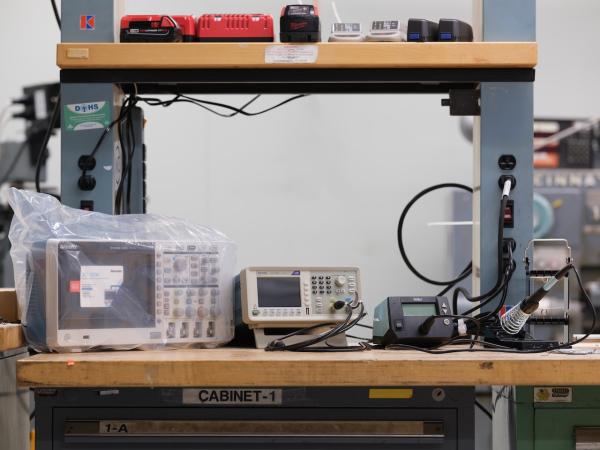
CREDIT: JASPER SHIDE, NINDS
Not your grandpop’s workstation… or is it? Workstations like this one are available throughout the space for creators of all ilks.
The BETA Center Makerspace offers support across four broad areas: Laser cutting, 3D printing (including metal), electropolishing, and electronics. So, do you need a custom animal enclosure or containment shield? Cut it out of acrylic. Need biocompatible models for implant prototyping? Print it in resin. Need a surgical tool deburred before use in preclinical research or simulation? Print it in stainless steel and smooth the surfaces with a dry electropolisher.
Need to etch your boyfriend’s or girlfriend’s name stylistically onto an acrylic keychain for absolutely no research reason?
Well, that’s certainly technically feasible, but let’s not push it.
Presented with all this high-tech equipment, Manu Platt, an NIBIB principal investigator and BETA Center director, started low and scored big. He used the Makerspace to print the aforementioned thingamajig, a custom-made set of frames to hold sheets of cellophane that his research group uses to dry polyacrylamide gels. The product he had relied on for years was discontinued. He was faced with redesigning his experiment until inspiration hit and he realized he could 3D print that jawn.
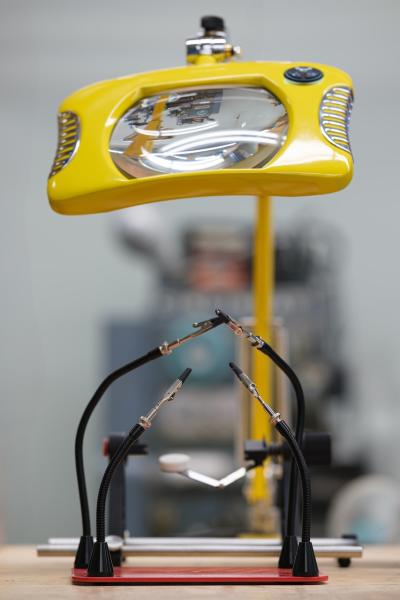
CREDIT: JASPER SHIDE, NINDS
Not Pixar but it is a ‘helping hands’ soldering station with magnifying lamp.
“The only sheets we could find from other companies were much smaller and too small to fit within the old frames,” Platt said. “Since I had just had my orientation at the Makerspace, the possibility that they could just print us new frames that fit the size of the available cellophane surfaced—and ta-da!” The final, custom-made product is actually better than the original, he said.
Platt added that Makerspace has a natural home in the BETA Center, a collaborative hub that develops and applies engineering and physical science solutions to accelerate biomedical discovery and improve human health.
The Makerspace also works hand-in-glove with NIBIB’s Instrumentation Development and Engineering Application Solutions (IDEAS) lab, which develops novel instruments and methodologies for the intramural community. IDEAS can handle tasks too complex or time-consuming for you to take on yourself at the Makerspace.
Read more about the IDEAS lab in this Research in Action article.
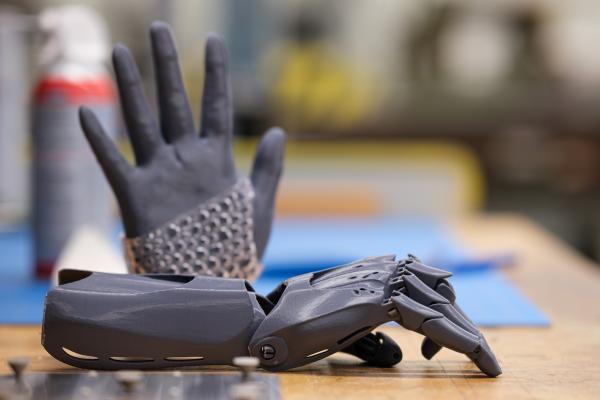
CREDIT: JASPER SHIDE, NINDS
Handiwork. A 3D-printed wrist-actuated prosthetic hand (front); and a 3D print of an individual’s hand with a second print of webbing (back) as a custom brace/cast design to demonstrate a perfect fit that can go, well, hand in glove.
Not just for engineers
Don’t worry if you don’t know your PLA from your PETG. Makerspace staff is on hand to guide you through material selection, printer settings, and every step in between. The staff includes Jake Brandt, the Makerspace lab technician with a background in manufacturing and mechanical design.
“My job is to demystify the technology,” Brandt said.
Fabrication isn’t just about printing widgets. It is about solving problems faster, smarter, and cheaper. And it’s about enabling innovation at any level in your research project.
For example, let’s say you want to design a chamber for inhalation studies. Kim and Brandt can walk you through choosing the right materials, ensuring biocompatibility, verifying gas-tight seals, and minimizing print time. They can even help you design for sterilization compatibility, be it by autoclave, chemicals, or gamma radiation.
Their consultation service encompasses factors such as strength and durability, size, resolution and accuracy, sterilizability, biocompatibility, permeability, printability, and perhaps most important, time. Some large or high-resolution prints could take weeks to finish. The facility staff can walk you through project idea, to training, to fabrication.
The Makerspace is located in Building 13, room 3W31. (The best way to enter is via a door on the backside, near Service Road West; you can thank us later.) Once trained, users can drop in to work on their projects during operating hours, 9:30 a.m. to 4:30 p.m. Monday through Friday.
The team offers introductory tours every other Friday. Take the tour to open your mind to what is possible. Contact BETACenterMakerspace@mail.nih.gov to get started.
Searching for community? The BETA Center hosts a very lively “meet and greet” each month. Join the Listserv email newsletter BETACENTER-ANNOUNCEMENTS to learn more.
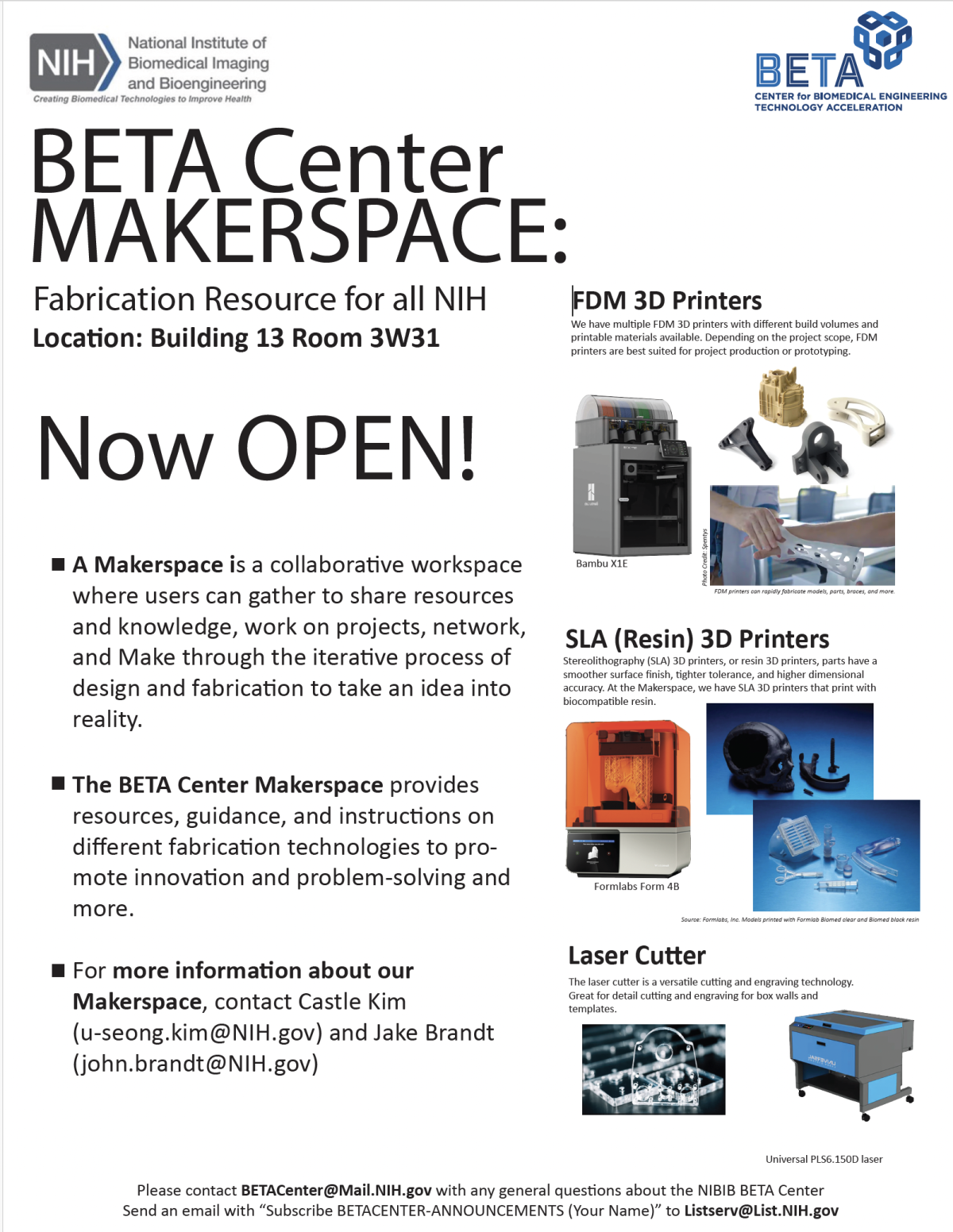
This page was last updated on Wednesday, July 16, 2025
